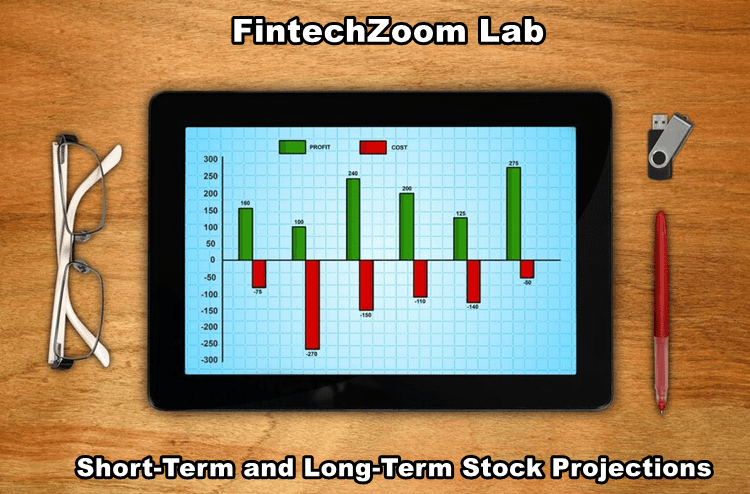General Electric (GE) has long been a powerhouse in the industrial sector, with a history of innovation and resilience. As the company undergoes significant transformation to adapt to today’s dynamic markets, investors are keeping a close eye on its stock trajectory. FintechZoom GE Stock analysis dives deep into the various factors influencing GE’s performance, from strategic innovations in renewable energy and healthcare to the company’s efforts in reducing debt and driving operational efficiency.
By leveraging advanced analytics tools, FintechZoom Pro enables investors to evaluate GE’s stock performance through a multifaceted lens highlighting insights from fundamental and technical analysis to artificial intelligence-driven predictions. With an eye on sustainability and digital evolution, GE continues to capture the interest of investors seeking robust growth in volatile markets.
This analysis provides an in-depth look at the key trends, challenges, and growth prospects for GE, presenting valuable insights for both seasoned investors and new entrants.
What is GE and FintechZoom Analysis
For over a century, General Electric Stock has stood as a testament to industrial innovation. From household appliances to powering jet engines, GE has redefined and reshaped industries. Today, as Investment FintechZoom delves into the details of GE’s stock, we aim to uncover the strengths and weaknesses that have shaped the stock’s value over the decades.
This analysis will explore the influence of both internal dynamics, such as GE’s leadership changes and business decisions, and external factors, like global market conditions and industry trends. For those looking to invest, understanding these complexities can provide an edge in making informed choices.

A Snapshot of GE’s Historical Performance
The past is a mosaic of GE’s dynamic journey. Back in the 1980s and 1990s, GE was a darling of Wall Street, with stock prices soaring under the leadership of Jack Welch. This growth was fueled by aggressive acquisitions, strategic expansions, and a strong brand reputation. However, the early 2000s brought new challenges, including the financial crisis of 2008, which tested GE’s resilience. The crisis exposed vulnerabilities in GE’s financial services arm, leading to a massive restructuring effort and shedding of various non-core assets.
In more recent years, GE has continued to adjust, shifting its focus to core areas like aviation, healthcare, and renewable energy. Today, with a leaner business model, FintechZoom GE Stock aims for sustainability rather than the explosive growth of its past. Observing these shifts helps investors understand the patterns and cycles that could influence GE stock in the future.
FintechZoom GE Stock Present Market
In today’s volatile economic environment, market trends play a crucial role in shaping FintechZoom GE Stock performance. The industrial sector, in particular, is heavily influenced by factors like supply chain disruptions, commodity price fluctuations, and regulatory shifts towards sustainable practices. Recently, there has been an increased emphasis on renewable energy, which aligns well with GE’s push into green technologies, including wind turbines and hydrogen-based power solutions.
As the world transitions to cleaner energy, GE is poised to capitalize on these trends, but only if it manages to stay competitive against industry giants like Siemens and Honeywell.
Moreover, inflation and rising interest rates pose short-term challenges. Higher borrowing costs affect GE’s capital-intensive projects, potentially squeezing profit margins. By understanding these economic and industrial forces, investors can better gauge the immediate pressures on GE stock and assess how the company’s strategy might evolve in response.
GE’s Core Competencies and Business Segments
At its heart, General Electric is a diversified conglomerate, with its businesses spanning multiple industries. Among its main segments are aviation, healthcare technology, and renewable energy. Let’s explore each one and its contribution to GE’s overall valuation:
1. Aviation
GE Aviation is a significant revenue driver for the company. Its jet engines power commercial airlines, military aircraft, and even private jets across the globe. With partnerships with major airline manufacturers, such as Boeing and Airbus, GE Aviation’s growth directly correlates with global air travel trends. As the travel industry recovers from the COVID-19 slowdown, GE Aviation stands to benefit.
2. Healthcare
GE Healthcare is another cornerstone, particularly given the global focus on healthcare advancements. With technologies spanning medical imaging, diagnostics, and patient monitoring systems, this segment serves as a high-margin business. As demand for healthcare rises, GE Healthcare’s cutting-edge solutions offer tremendous growth potential, especially in emerging markets.
3. Renewable Energy
GE’s commitment to renewable energy is more than just a corporate responsibility; it’s a critical part of its future growth strategy. The renewable energy division focuses on wind turbines, hydroelectric power, and other green technologies. While competition in this sector is intense, the demand for sustainable solutions could drive substantial long-term revenue.
Each of these segments is integral to GE’s value proposition, allowing the company to weather industry fluctuations while targeting new growth areas.
Impact of Economic Indicators on GE Stock
Economic indicators like interest rates, inflation, and GDP growth are not mere statistics they serve as guideposts for industrial giants like GE. When the Federal Reserve raises interest rates, for instance, companies face higher borrowing costs, which can impact cash flow and project funding. Inflation adds another layer of complexity, affecting commodity prices and, subsequently, FintechZoom GE Stock cost of production.
Furthermore, global GDP growth often aligns with GE’s business cycles. When economies expand, demand for GE’s industrial products, such as power equipment and healthcare machinery, typically rises. Conversely, in periods of economic downturn, demand contracts. By tracking these economic markers, investors can anticipate shifts in GE stock performance and make more strategic investment choices.
Short-Term and Long-Term Stock Projections
Projections for FintechZoom GE Stock often oscillate between optimism and caution. In the short term, GE stock may experience increased volatility due to macroeconomic pressures and sector-specific headwinds. Factors like ongoing restructuring costs and competitive challenges can weigh on short-term performance. However, if GE manages to streamline its operations and harness growth in its high-potential segments, long-term prospects remain promising.
For long-term investors, GE’s emphasis on innovation and technological adoption is encouraging. With the renewable energy market growing and healthcare demands surging, GE has ample room to evolve. Evaluating these short-term and long-term perspectives enables investors to assess whether FintechZoom Chevron Stock aligns with their financial goals.

Competitive Analysis in the Industrial Sector
GE operates in a highly competitive industrial landscape, facing formidable rivals such as Honeywell, 3M, and Siemens. Each of these companies brings its unique strengths, and while some are more niche-focused, others, like GE, have diverse business portfolios. This competition can sometimes drive innovation but also intensifies market pressures. For instance, Siemens’ focus on automation technology poses a challenge for GE in certain segments, while Honeywell’s emphasis on digital solutions threatens GE’s position in the energy sector.
However, GE’s strong brand reputation and diversified segments give it an edge. A comprehensive competitive analysis reveals how GE leverages its scale to compete, but also highlights areas where it must innovate to remain relevant.
Role of Innovation and Technology in GE’s Growth
Innovation is the pulse of GE’s strategy, especially in an age of rapid technological advancement. One prime example is GE Digital, which integrates AI, machine learning, and IoT to streamline industrial processes. Through digital transformation, GE aims to make manufacturing and maintenance more efficient, offering value-added services to clients. The move toward digitization has not only created new revenue streams but has also solidified GE’s market position in a technology-driven economy.
GE’s investment in AI and analytics showcases its commitment to leading in industrial technology. In an industry where efficiency and reliability are paramount, these technological advancements are poised to play a crucial role in GE stock’s long-term growth.
Potential Risks and Challenges
With opportunity comes risk, and Fintechzoom General Electric Stock is no exception. The company faces a myriad of challenges, both internal and external. One significant risk is its dependence on cyclical industries. When demand in aviation, healthcare, or energy dips, GE’s revenues are directly impacted. Additionally, GE’s global presence exposes it to foreign exchange risks, where fluctuating currencies affect profitability.
Regulatory changes also loom as potential hurdles. For instance, shifting environmental policies may require GE to adapt its production processes, potentially increasing operational costs. For investors, weighing these risks is as essential as examining growth potential.
FAQs About GE Stock
What are the main factors influencing GE’s stock performance?
GE’s stock performance is influenced by several factors, including its financial health, sector-specific trends, and broader economic conditions. Key influences include demand in aviation and healthcare, developments in renewable energy, interest rates, inflation, and the impact of regulatory changes.
FintechZoom provides tools to track these elements, allowing investors to see how each impacts GE stock’s short- and long-term performance.
How does FintechZoom help with technical analysis of GE stock?
FintechZoom offers a range of technical analysis tools, such as moving averages, RSI, and MACD, to help investors gauge trends in GE’s stock price. These indicators can reveal patterns, price momentum, and potential reversal points, which are essential for making informed trading decisions.
Investors can access historical charts and predictive analytics to better understand market sentiment and timing.
What are the primary risks associated with investing in GE stock?
Some primary risks of investing in GE stock include exposure to cyclical industries like aviation, regulatory risks, and foreign exchange fluctuations. GE’s performance can also be affected by global economic slowdowns, which may reduce demand for its products and services.
FintechZoom’s risk management tools can help investors mitigate these risks by offering insights into diversification and stop-loss strategies.
Is GE’s shift toward renewable energy expected to impact its stock positively?
GE’s investment in renewable energy, particularly wind power, is aligned with the global shift toward sustainable energy solutions. This transition is seen as a long-term growth driver for GE, as governments and industries push for cleaner energy.
However, the competitive landscape and ongoing challenges in the renewable sector mean that results may be gradual. FintechZoom’s analysis can provide insights on how these trends might shape GE’s stock value over time.
How does GE’s financial restructuring affect its stock valuation?
GE has undergone significant restructuring to streamline its operations, reduce debt, and refocus on core sectors like aviation and healthcare. This has helped stabilize GE’s finances and improve its profitability outlook.
By analyzing financial metrics such as cash flow, profit margins, and debt levels on FintechZoom, investors can assess whether these restructuring efforts make GE a viable long-term investment.
Final Verdict
The final verdict on FintechZoom GE Stock is far from straightforward. While the company boasts a diversified portfolio and a commitment to innovation, the complexities of global markets and industry-specific challenges make it a mixed bag. For investors with a high risk tolerance and a keen eye on long-term trends, GE stock offers a pathway to tap into industrial growth. However, as with all stocks, prudent risk assessment and strategic planning are vital.
